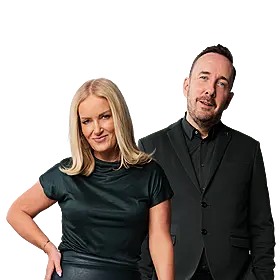Recently, it has been revealed that the use of electroconvulsive therapy (ECT), seclusion and physical restraint in the treatment of psychiatric patients have all increased for the first time in years, according to the Mental Health Commission.
ECT is a treatment formally known as electroshock therapy which involves the administration of small currents to the brain in order to relieve symptoms of psychiatric illness.
There was a 70% rise in the number of ECT programmes given to patients who were either unwilling to receive it or unable to consent.
Mary Maddock underwent ECT. She spoke to Newstalk Lunchtime about her treatment. She couldn't remember the first time but she did receive 13 series of it.
She said: "It's often used as a threat to people, even if they don't receive it.
"When you receive electroshock, as I call it, it's in order to have a seizure, the brain to have a seizure. People know that seizures are not good to have. We know that people forget so many things if they have seizures."
Presenter Jonathan Healy asked does the procedure hurt. Mary responded: "You don't feel it but you feel the affects afterwards. Afterwards, you can't remember a long time preceding that time.
"When I was in the hospital the second time, the so-called hospital I call it, I couldn't remember all the people that came in to see me or anything like that.
"To go back to life after having received this kind of, I don't call it treatment, having received that, to exist afterwards is very, very hard. It's hard to have a job, to provide for yourself."
She went on to detail that the treatment was forced upon her: "It was forced upon me, because I didn't receive it, it was informed consent.
"The first time I received electroshock was three days after giving birth. Before that, I had just had a baby and because the doctors misunderstood me at the time of birth, they thought I needed to go to a psychiatric hospital."
She went on to detail her treatment in detail and the impact this had on her afterwards.
"My thoughts began to race, I wasn't able to sort of be the person I was, even at that time," she stated.
"Giving me all this drug treatment that was very bad for me and was changing my personality, I was misunderstood in the hospital as needing to go to a psychiatric hospital in the first place."
She went on to tell Jonathan: "It set you off to a very bad start and this was my early married life. I was a music teacher as well and I had learned a lot of music and was able to memorise it well because I had done a lot of practising.
"A lot of that was just wiped out. How could I have been the music teacher I could have been?"
She stated that the treatment hasn't changed since the 1970s.
"My reaction is outrage and it's outrage that it's more woman than men. It's 2:1 women get it and are forced to have it and this is not just in Ireland. This is an international trend and the international trend is now that we know that electroshock goes on in the hospitals, people didn't even know that and they still don't know it.
"It's not fine to take your personality away."
You can listen to her story here:









